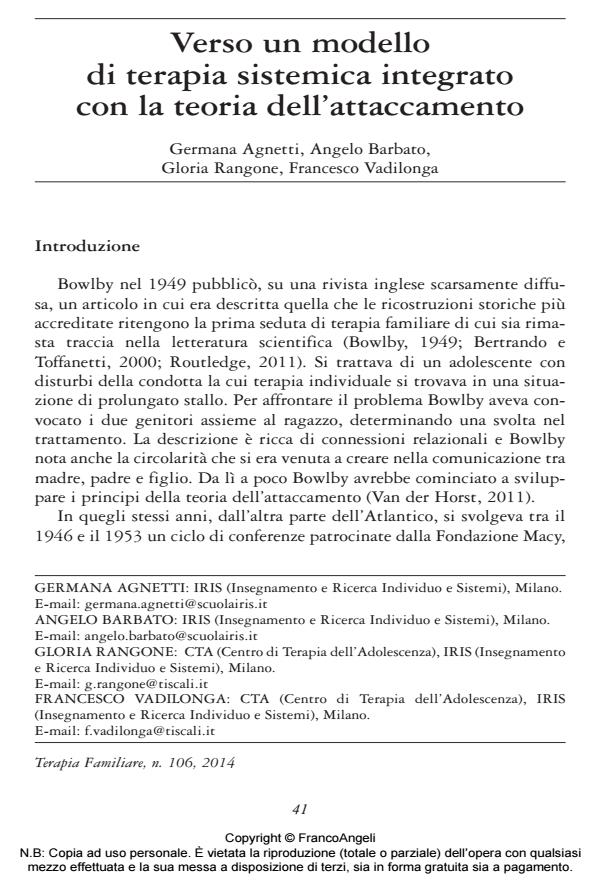Verso un modello di terapia sistemica integrato con la teoria dell’attaccamento
Titolo Rivista TERAPIA FAMILIARE
Autori/Curatori Germana Agnetti, Angelo Barbato, Gloriana Rangone, Francesco Vadilonga
Anno di pubblicazione 2015 Fascicolo 2014/106
Lingua Italiano Numero pagine 31 P. 41-71 Dimensione file 240 KB
DOI 10.3280/TF2014-106002
Il DOI è il codice a barre della proprietà intellettuale: per saperne di più
clicca qui
Qui sotto puoi vedere in anteprima la prima pagina di questo articolo.
Se questo articolo ti interessa, lo puoi acquistare (e scaricare in formato pdf) seguendo le facili indicazioni per acquistare il download credit. Acquista Download Credits per scaricare questo Articolo in formato PDF

FrancoAngeli è membro della Publishers International Linking Association, Inc (PILA)associazione indipendente e non profit per facilitare (attraverso i servizi tecnologici implementati da CrossRef.org) l’accesso degli studiosi ai contenuti digitali nelle pubblicazioni professionali e scientifiche
I costrutti che derivano dalla teoria dell’attaccamento possono essere utilmente integrati, in virtù della loro coerenza teorica e della loro efficacia clinica, all’interno di psicoterapie fondate sul modello sistemico. Dopo la presentazione di alcuni modelli significativi caratterizzati da questa integrazione e l’esame degli studi di efficacia disponibili, viene illustrato l’approccio messo a punto dagli autori e la sua declinazione in vari ambiti di intervento. Infine si fa cenno ad un progetto in corso d’opera, che riguarda la manualizzazione della psicoterapia con famiglie adottive che hanno accolto bambini gravemente traumatizzati.
Parole chiave:Terapia familiare integrata con la teoria dell’attaccamento, strumenti di valutazione dell’attaccamento, meta cognizione, manualizzazione
Germana Agnetti, Angelo Barbato, Gloriana Rangone, Francesco Vadilonga, Verso un modello di terapia sistemica integrato con la teoria dell’attaccamento in "TERAPIA FAMILIARE" 106/2014, pp 41-71, DOI: 10.3280/TF2014-106002